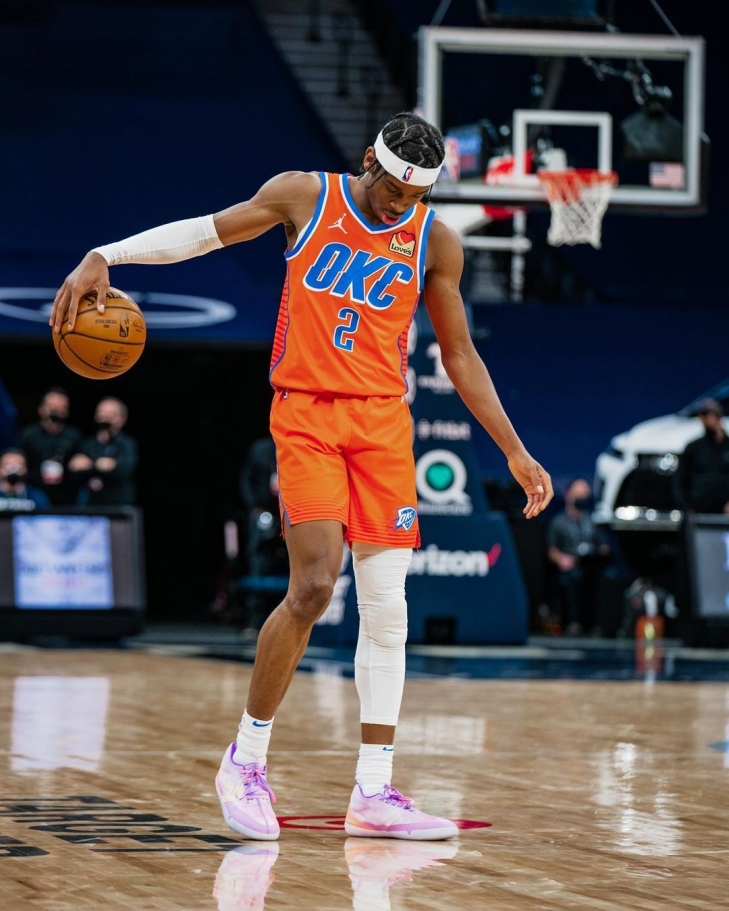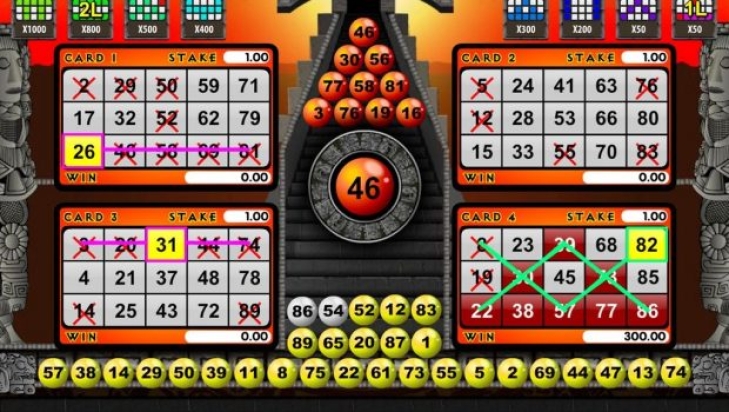
Committee Chairman
NIHOF NHL CUP Standings: Update 10, Feb 8
If you are a regular visitor at Notinhalloffame.com, you know that we created the Notinhalloffame NHL Cup, where in every regular season game, we award points (5-4-3-2-1) to the top five performers. This is the third year that we have done this, and Edmonton’s Connor McDavid won the first two.
To keep everyone regularly in the loop this time, we have decided to give regular updates, starting at Thanksgiving, and tell all of you the top ten. We will be doing updates every Thursday.
Here is the tenth current top ten in Notinhalloffame Cup Points:
1. David Pastrnak, Boston Bruins. 102 Cup Points: 50 Games, 33 G, 39 A, 73 P, +16, 9.3 PS. (#1 Last Week)
The Boston Bruins (like last year) have been the best team early in the season, and it is the Czech Republic’s David Pastrnak who has led their offensive threat. He is the league-leader in Shots (251), is third in Points (73), third in Goals (33) fourth in Point Shares (9.3) and ninth in Assists (39) and is Boston’s leading scorer, and is in the top ten in most essential offensive categories. Could he win his first Hart, but if not, maybe his first NIHOF Cup? Notably, leaving the All-Star break (where he went to his fourth), Pastrnak is enjoying his biggest Cup Point lead to date.
2. Nikita Kucherov, Tampa Bay Lightning. 90 Cup Points, 50 Games, 32 G, 54 A, 86 P, +4, 9.9 PS. (#2 Last Week)
Kucherov is in his tenth season in Tampa, and is putting forth a season that could gain him another Hart or Art Ross Trophy. He is leading the NHL in Points (86) and Assists (54) and is second in Point Shares (9.9) and fourth in Goals (32). It is a minor surprise that he is not first in Cup Points, but at one time, he was close.
3. Auston Matthews, Toronto Maple Leafs, 89 Cup Points: 48 Games, 41 G, 20 A, 61 P, +16, 8.7 PS. (#3 Last Week)
The American sniper is back as the league’s top goal-scorer, holding the lead in that (41) and Even-Strength Goals (30), and is also fifth in Point Shares (8.7). If he holds that, Matthews will win his third Rocket Richard Trophy, though Kucherov is closing in fast.
4. Nathan MacKinnon, Colorado Avalanche, 82 Cup Points: 51 Games, 32 G, 53 A, 85 P, +16, 9.8 PS. (#4 Last Week)
MacKinnon remains is second in Assists (53) and Points (85) and is also fourth in Goals (32). He is also second in Shots (235) and third in Point Shares (9.8).
5. Connor McDavid, Edmonton Oilers, 79 Cup Points: 44 Games, 21 G, 47 A, 68 P, +16, 7.7 PS. (#5 Last Week)
The Edmonton Oilers began the year as a disappointment, but they have been on fire as of late, with a 16-game win streak. McDavid has not been lighting the lamp like he did last year, but he has however been a great playmaker, and is fourth in Assists (47) and Points (67). Can he make it back to the top of the mountain and win the NIHOF Cup again?
6. Artemi Panarin, New York Rangers, 71 Cup Points: 51 Games, 31 G, 36 A, 67 P, -1, 7.9 PS. (#5 Last Week)
Panarin is back where he belongs in the top ten, and let’s see if he falls off again. Currently, he is sixth in Points (67), and Goals (30) and tenth in Assists (36).
7. Filip Forsberg, Nashville Predators, 70 Cup Points: 51 Games, 24 G, 27 A, 51 P, +6, 6.0 PS. (#8 Last Week)
Forsberg also made top ten return and is fourth in Even Strength Goals (21) and Shots (203).
8 (TIE). Mikko Rantanen, Colorado Avalanche, 69 Cup Points: 51 Games, 28 G, 39 A, 67 P, +3, 7.2 PS. (#8 Last Week)
Rantanen is making another run for a 100-Point year and is currently sixth in Points (66) and ninth in Goals (27).
8 TIE). Sam Reinhart, Florida Panthers, 69 Cup Points: 50 Games, 37 G, 25 A, 62 P, +13, 8.7 PS. (#7 Last Week)
Currently having the best year of his life, Reinhart is the current leader in Power Play Goals (20), Game-Winning Goals (9) and Shooting Percentage (27.6), and is also second in Goals (37), fifth in Point Shares (8.6), and ninth in Points (62). Historically a good player, Reinhart has never had a year like this before, and he just enjoyed his first All-Star Game.
8. (TIE). Juuse Saros, Nashville Predators, 68 Cup Points: 40 Games, 19-19-2 Record, 2.94 GAA, .903 Save Percentage, 6.4 PS. (#8 Last Week)
Saros comes back to the top ten, and does so with an even Won/Loss record. A surprise to be here (like he was before), Saros is a workhorse who is second in Minutes Played (2,243) and Saves (1,019) and is eighth in Goalie Point Shares (6.4). He is not the best Goalie this season, but here he is. That is the way Cup Points can work.
8. (TIE). Elias Pettersson, Vancouver Canucks, 68 Cup Points: 50 Games, 27 G, 38 A, 65 P, +16, 7.5 PS. (Not Ranked in the Top Ten Last Week)
Pettersson makes a return to the top ten and is on pace to match or exceed his 102 Points from last year. The current league-leader in Game-Winning Goals (9), just added his fourth All-Star and is eighth in Points (64) and ninth in Goals (27).
Nobody fell out of the top ten.
Our next update will be next Thursday.
NIHOF NBA CUP Standings: Update 10, Feb 8
If you are a regular visitor at Notinhalloffame.com, you know that we created the Notinhalloffame NBA Cup, where in every regular season game, we award points (5-4-3-2-1) to the top five performers. This is the fourth year that we have done this, and Denver’s Nikola Jokic winning the first two, and Joel Embiid of the Philadelphia 76ers winning last year.
To keep everyone regularly in the loop this time, we have decided to give regular updates, starting at Thanksgiving. We will update this every Wednesday.
Here is the current top ten:
1. Shai Gilgeous-Alexander, Oklahoma City Thunder, 208 Cup Points: 50 Games, 4.16 Cup Points Per Game, 31.1 PPG, 5.6 RPG, 6.6 APG, 2.2 SPG, 0.9 BPG, 30.7 PER, 10.8 WS. Last Week #2.
Gilgeous-Alexander broke through to the upper-tier last season, and he is proving that this was no fluke. Taking over as the league-leader in Cup Points, He is leading the NBA in Steals per Game (2.2), Steals (112), Points (1,594) Free Throws (403), and Win Shares (10.8). SGA is also second in VORP (5.3), third in Points per Game (31.1), PER (30.7), and Box Plus/Minus (10.3) and is fourth in Points per Game (31.1). The Canadian is now an MVP contender, and could join Steve Nash in that exclusive club. Even if he doesn’t this year, SGA added his first Player of the Month Award in December.
2. Giannis Antetokounmpo, Milwaukee Bucks, 206 Cup Points: 49 Games, 4.20 Cup Points per Game, 31.3 PPG, 11.3 RPG, 6.3 APG, 1.4 SPG, 1.1 BPG, 29.5 PER, 8.5 WS. Last Week, #3.
The two-time MVP has never had a better supporting cast than he does now, and he is responding by doing what he always does: dominate. Antetokounmpo, however has slightly less metrics than previous years, but the arrival of Damian Lillard means he does not have to always carry the load. The December Eastern Conference Player of the Month is second in Points per Game (31.3), fifth in Rebounds per Game (11.3), and is the league-leader in Field Goals (574).
3. Nikola Jokic, Denver Nuggets, 201 Cup Points, 49 Games, 4.10 Cup Points per Game, 26.3, PPG, 12.2 RPG, 9.0 APG, 1.2 SPG, 0.9 BPG, 32.0 PER, 10.6 WS. Last Week, #1.
Last year, Jokic became an NBA Champion and a Finals MVP and shook off what some may have perceived as an MVP snub, however, he has fallen off the top spot. At present, the Joker is leading the NBA in Box Plus/Minus (14.3), VORP (6.9) and Triple Doubles (15). He is also second in PER (32.0), Win Shares (10.6), third in Rebounds per Game (12.2), and fourth in Assists per Game (9.0). Jokic also was named the November Player of the Month. Can he reclaim the top before the season ends?
4 TIE. Jayson Tatum, Boston Celtics, 172 Cup Points: 48 Games, 3.58 Cup Points per Game, 26.9 PPG, 8.4 RPG, 4.5 APG, 1.0 SPG, 0.6 BPG, 21.6 PER, 6.3 WS. Last Week #4.
Tatum begins the year the way he ended the last one: an MVP contender on a power team. He has already a nabbed a Player of the Week Award, and is poised to take the Celtics on his back to a title.
4 TIE. Luka Doncic, Dallas Mavericks, 172 Cup Points: 43 Games, 4.00 Cup Points per Game, 34.5 PPG, 8.8 RPG, 9.4 APG, 1.4 SPG, 0.6 BPG, 27.8 PER, 6.8 WS. Last Week #4.
Doncic is on a four-year streak of First Team All-NBA stars, and he is on pace to add a fifth. Hs took over the NBA lead in Points per Game (34.5) and Minutes per Game (37.4), third in Assists per Game (9.4), eighth in Steals per Game (1.4), and is in the top ten in PER (27.8), Win Shares (6.8), Box Plus/Minus (9.3), and VORP (4.7).
6. Domantas Sabonis, Sacramento Kings, 164 Cup Points: 50 Games, 3.22 Cup Points per Game, 19.9 PPG, 13.1 RPG, 8.1 APG, 0.8 SPG, 0.5 BPG, 23.0 PER, 7.5 WS. (#8 Last Week)
Sabonis is the current rebounding leader (13.1), Rebounds (656), Defensive Rebounds (497), Triple-Doubles (15) and is seventh in Assists per Game (8.1), and is the top ten in VORP (3.6) and Box Plus/Minus (6.1).
7. Jalen Brunson, New York Knicks, 154 Cup Points: 49 Games, 3.14 Cup Points Per Game, 27.2 PPG, 3.9 RPG, 6.5 APG, 0.9 SPG, 0.2 BPG, 22.0 PER, 7.0 WS. (#10 Last Week).
Jalen Brunson is having the season of his life, and has just added his first (impending) All-Star Game. He is currently fifth in seventh in Win Shares (7.0) and eighth in Points per Game (27.2).
8 (TIE). Joel Embiid, Philadelphia 76ers, 150 Cup Points, 34 Games, 4.41 Cup Points per Game, 35.3, PPG, 11.3 RPG, 5.7 APG, 1.1 SPG, 1.8 BPG, 34.3 PER, 7.0 WS. (Last Week #6)
Embiid is the reigning MVP, NIHOF Cup Winner, and two-time scoring champion, but is facing injury time, and will be out for the next few weeks. Had he been healthy, he would be number one,
8 (TIE). Kevin Durant, Phoenix Suns, 150 Cup Points: 44 Games, 3.41 Cup Points Per Game, 28.3 PPG, 6.4 RPG, 5.6 APG, 0.9 SPG, 1.1 BPG, 23.4 PER, 6.0 WS. (Not in the Top Ten Last Week).
Durant returns to the top ten, and the Suns have improved. He has moved up to fifth in Points per Game (28.3) and tenth in PER (23.4), Box Plus/Minus (5.8) and VORP (3.2)
10. Anthony Davis, Los Angeles Lakers, 149 Cup Points: 48 Games, 3.15 Cup Points per Game, 24.7 PPG, 12.3 RPG, 3.9 APG, 1.1 SPG, 2.4 BPG, 25.3 PER, 7.3 WS. (#7 Last Week)
Davis is currently third in Rebounds per Game (12.3), and is the healthiest he has been in years. He is also fifth in Blocks per Game (2.4), and Win Shares (7.3) and seventh in PER (25.3)
Los Angeles’s LeBron James and New York’s Julius Randle fell out of the top ten.
Our next update will be up on next Thursday.
The evolution of bingo: how to play online
The game of bingo has been around for hundreds of years. Whilst it’s evolved over time, it still remains the same game at its core. Before the internet really took off, the only way you could play bingo was to go to your local bingo hall, sign up and play in person.
However, with the internet being what it is today and the accessibility it provides to people, this is no longer the case, You can easily log onto your computer and play a game of bingo in minutes. This means people who either don’t want to or can’t get to a bingo hall, can still play bingo with jackpotjoy.
In this article we’ll look into how bingo has evolved over time and the differences between in house bingo and online bingo.
Accessibility
Before the internet was the beast we know it as today, the only way you could play a game of bingo was by taking a trip to your local bingo hall. Whilst this was okay for some, other people either didn’t want to play in a large open bingo hall or were unable to attend. This meant a large number of players were alienated from playing and were unable to take fully experience the world of bingo.
In the early 90s, the internet really started to take off, and as such more and more companies learned they could put their services online. Bingo companies were no different and before long, most major bingo companies were giving players the opportunity to play bingo online.
All of a sudden, players who weren’t able to play, were able to take their first steps into online bingo and begin their adventure and play from the comfort of their own home.
Community
One of the main benefits of playing in a bingo hall is the community. You tend to find a regular community who attend these bingo halls and build up a connection. Players will get to know each other and build friendships.
One way online bingo companies have addressed this issue is by introducing chat systems. This means when you’re playing your favourite bingo game, you’re able to chat online to the other players in the game. This means you can talk with other bingo lovers without ever leaving your home, which in these winter months is a great bonus!
Price
Nowadays everyone is trying to save money where they can, pinching the pennies here, there and everywhere. So players playing their favourite bingo games is no different. Cost plays a bigger role in the in house vs online bingo conversation than you may think.
The first reason is travel, you have to make your way to your local bingo hall, which for most people is either driving, taxi or public transport. Once you’ve arrived and have had a catch up with the other locals, you may buy a drink and some food.
As you’re there in person with other players, you may be inclined to stay longer and play more games if other players keep on playing. Compare this to online bingo, whilst you may be chatting to other players online, you can stop whenever you like and you’re already home, you don’t need to worry about travelling home.
As bingo halls also have costs to cover such as maintenance, insurance and staff, the cost to play may be higher than playing online as online providers will have significantly less costs to consider.
Ways of playing
When playing in a bingo hall, there’s one way of playing, you dont have any options or variety. However when playing online, the world is at your fingertips. You can shop around finding different websites and variations of games. There are different versions of bingo you can play, such as 30,50 or 75 ball bingo. This gives you the option of how quickly you want your games to go.
Not only are you able to choose what type of game you wish to play, you can choose the provider, this means you can find some great promotions and bonuses that you may not get in person. For example some websites will offer a signing up bonus and give you additional free games.
You can also play wherever and whenever you like when playing online. At home in the evening, on the train on the way to work? There’s always time for a quick game of bingo when playing online.
There will always be people who prefer one or the other when it comes to bingo. Some people prefer playing in person next to other players, however other people will prefer playing in the comfort of their own home. What is clear is that bingo is for everyone and should be able to be enjoyed by all players!
Digital Dynamism: Unveiling the Impactful Fusion of Tech and Celebrity
In the ever-evolving fields of sports and entertainment, something remarkable is happening at the crossroads of technology and recognition. Gone are the days when sheer talent and exposure were the sole ingredients for fame. Today, advanced tech, particularly in the arena of analytics, plays a central role in shaping the legacies of professionals — from athletes aiming for the Hall of Fame to musicians dreaming of chart-topping glory. In this landscape, even crypto betting sites are emerging as a new frontier, influencing the economics of fame and viewership in sports. Yet, sometimes the story isn't so straightforward; details are often missing when we observe the glossy surface of success.
Emerging tech trends in sports
Take, for instance, the world of professional sports. The integration of analytic tools has transformed the landscape, making a palpable impact even in fields like crypto betting sites. Here, data is king, with algorithms offering insights that go well beyond gut feeling and expertise. In the backdrop of cheering crowds, there's a silent revolution where analytics now informs betting odds, churning through players' performance metrics, weather conditions, and historical game data to reduce the details missing from the decision-making process. A buzz of excitement accompanies the shift, with enthusiasts keen to see how these calculated projections stack up against the unpredictable nature of live sports.
Moreover, wearables and IoT devices are entering the sports arena dazzlingly, providing a plethora of performance-related data ranging from heart rate to distance covered. This influx of real-time data, when combined with analytical software, equips teams and coaches with the means to tailor training regimens and in-game strategies uniquely suited to each athlete's strengths and weaknesses. As we behold this digital transformation, what often remains a details_missing narrative is the intricate dance between athlete and machine—where every sprint, jump, and swing leaves a digital footprint propelling sports science into new frontiers.
Unsung heroes of the music charts
Silicon Valley's code has quietly tiptoed onto the music stage as well, where big data and algorithms are redefining how hits are made. Producers and A&R executives, once reliant on instinct and experience, now turn to machines that dissect complex datasets—listener habits, viral trends, even sonic patterns—to remove any details missing in their predictions of the next big thing. Such tech-driven insights might not only predict future hits. Still, they could also sway induction deliberations for various music halls of fame, adding a layer of predictive analytics to the art of stardom.
In this digital era, social media platforms and streaming services are the new proving grounds for aspiring musicians. Viral TikTok challenges and Spotify playlists are becoming the bellwethers of potential hits. Yet, behind every trending track, there is an algorithm finessing a user's discovery journey. This symbiotic relationship between artists and tech platforms often goes unnoticed, with many details missing on how these services shape musical tastes and ultimately influence who becomes a chart-topper and who fades into obscurity.
Scriptwriting in the age of data
Similarly, in the film industry, analytics has become an unsung protagonist, guiding studios toward more assured box-office triumphs and aiding streaming services to tailor watchlists that keep subscribers hooked. The seemingly intuitive, creative decisions of which scripts make the cut increasingly owe credit to predictive models. These data-driven insights ensure that every detail missing piece of audience preferences is taken into account, shaping what has the potential to become a cinematic legacy or, perhaps, what finds its way into the annals of movie history.
The analytics edge in grooming sports talent
Back in the world of sports, data analytics hasn't just changed the game for fans and bettors; it's also revolutionizing how new talent is groomed for success. The tales of athletes who owe their rise to the tech behind their training regimes, as well as the digital scouts who unearthed them, are nothing short of inspirational. Sometimes, though, there are details missing in these success stories—like the countless hours data scientists spend transforming numbers into performance-improving insights, potentially elevating athletes toward the hall-of-fame trajectory.
Behind every great strategy: the rise of data
And it isn’t just the budding stars who reap the rewards of analytics. Even the strategies behind the most electrifying victories on the field can often be traced back to a room where data whisperers weave their magic. These analytical insights equip coaches and players with the tools needed to execute winning plays. However, the glory of the win rarely sheds light on the technology at play or the details missing from the headline story. These complex data interpretations may someday contribute to a sports figure’s legendary status.
As technology casts its net wider, one critical aspect remains unchanged – the human drive for recognition and the commemoration of excellence. Amidst the algorithms and the analytics, the essence of achieving fame has transformed, but the core ambition hasn’t. Whether it's in the fluctuating fortunes of crypto betting sites or the quiet, data-driven machinations behind a hall of fame induction, one truth persists: the journey to renown is now more intricate and intertwined with technology than ever before, and perhaps it’s the details missing that make the narrative all the more compelling.





